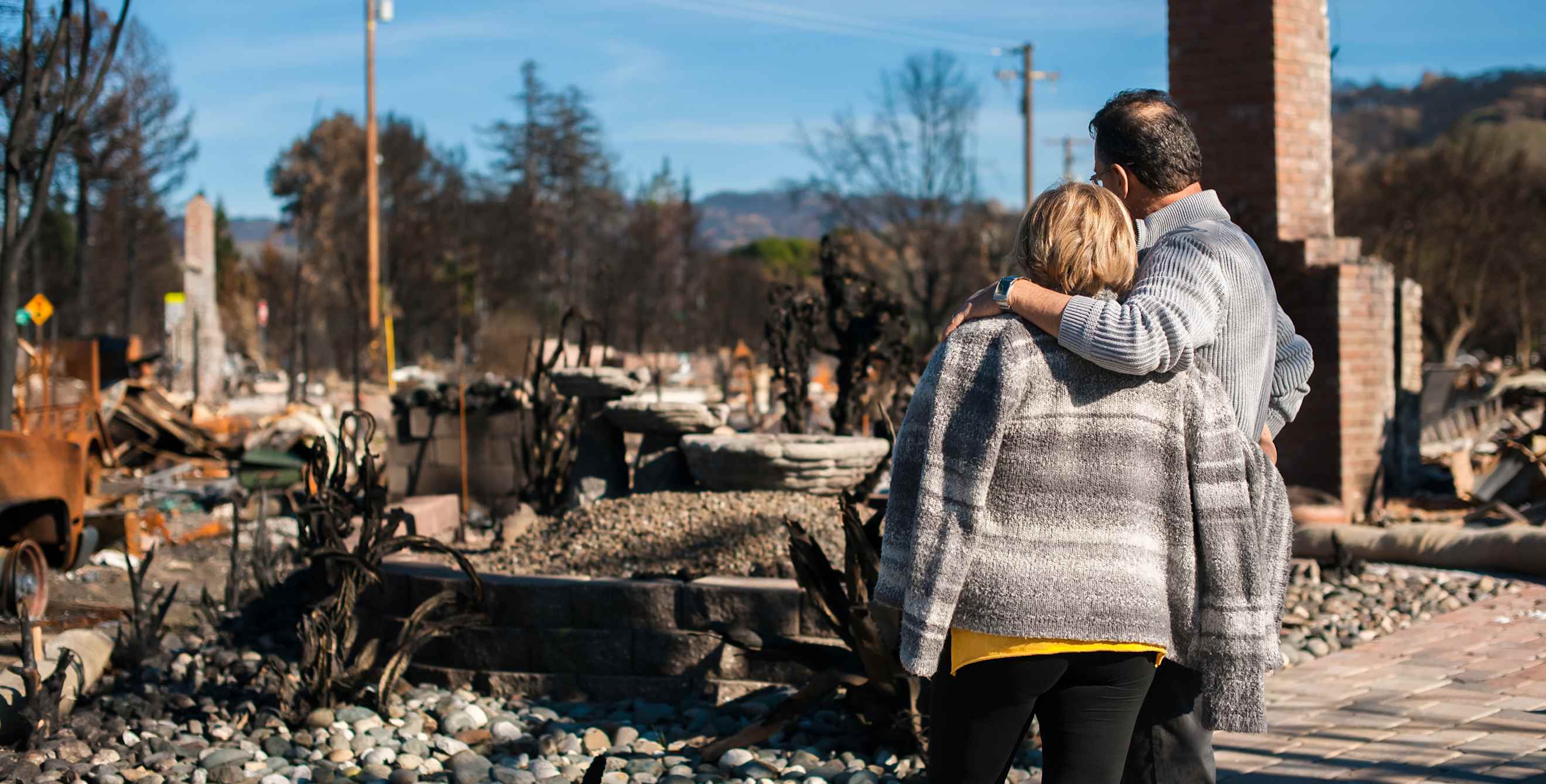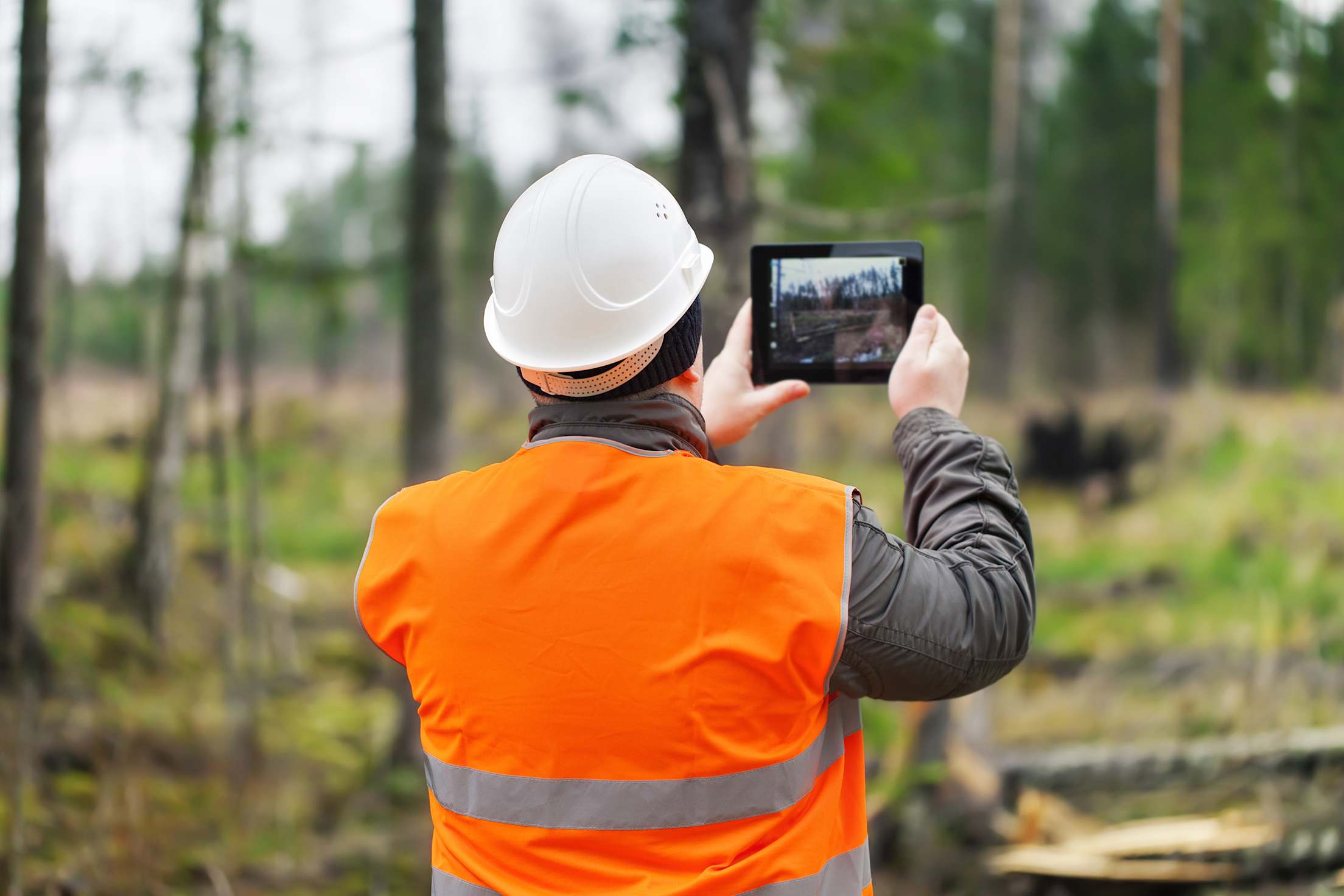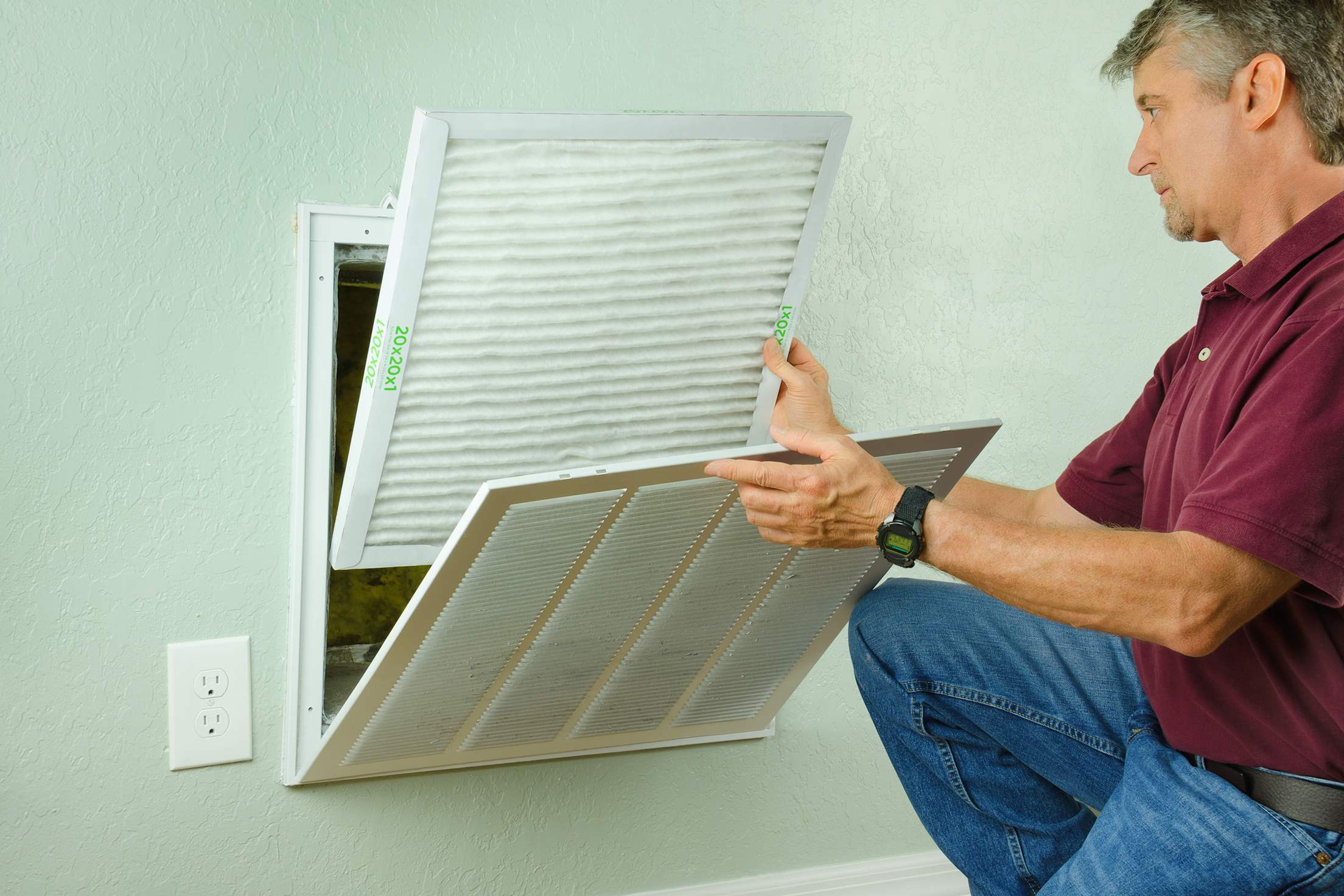
What to Do After a Wildfire
8 steps to ease recovery and navigate the insurance claims process.

More than 45,000 fires broke out nationwide in 2019, scorching 4.6 million acres of land and destroying thousands of homes and businesses. The majority of these blazes burned in the West, a region particularly susceptible to wildfires because of its warm, dry climate and high density of woods and grasslands.
Climatologists warn that regional wildfires will worsen in the future. Climate change has led to shorter rainy seasons and higher temperatures in the West. The less rain, the longer fire season lasts.
“The size, complexity, and speed of California's wildfires has definitely intensified since the drought started in 2010,” says Scott McLean, deputy chief of communications for Cal Fire. “And one wet winter doesn’t cure anything. We need several years of wet winters to fix the issues we’re seeing.”
More and more people living in the West stand to be affected as the blazes grow in frequency, size, and intensity. At least one in four California residents now lives in a fire-prone area, according to an urban development report from MIT. Devastating wildfires seem to have become the new normal. The increased public awareness has heightened wildfire preparedness efforts to promote safety. But what happens in the aftermath?
Recovering from a wildfire can be an arduous process. Filing an insurance claim. Assessing the damage. Cleaning up. Rebuilding. Here’s a to-do list of essential tasks, based on experts’ advice, to help you stay focused and organized during an understandably stressful time.
1. Check in with your insurance agent.
Evacuating your home can be stressful, chaotic, and scary. As soon as you’ve made sure everyone is safe, contact your insurance company to begin the claims process, advises Jennifer Rodriguez, a Nevada-based AAA insurance agent. Many insurance companies, including AAA, provide gift cards or reimbursements to policyholders for accommodations and basic necessities immediately after evacuation.
“Not everyone has a place to go. The most important thing is making sure our clients are safe and securing them temporary housing,” says Rodriguez.
Smart Tip: Coverage for additional living expenses—hotel stays or rentals, meals, and other necessities—and “loss of use” depends on your homeowners or renters policy. Check with your insurance provider for details.
Your insurance company will send a field inspector to your property to assess any fire damage. If the required repairs are extensive, you may not be able to return to your home until after construction is complete, Rodriguez says.
2. Wait for permission to return home.
Do not return until authorities deem it is safe to do so. After a fire is contained, authorities patrol the affected areas to look for hazards. Prior to lifting evacuations, emergency officials must clear roadways, install new infrastructure (such as power lines), and ensure the fire is sufficiently contained “so folks don’t have to re-evacuate,” McLean says.
In most communities, permission to return is granted by local fire and law enforcement officials and broadcast on the radio, social media, and online. “We work with local utilities, law enforcement, and various fire agencies to determine when it’s safe to go back in,” says McLean.
How will you know? Cal Fire and other state fire agencies send inspectors to determine which homes are destroyed or severely damaged. That information is distributed to the community by the local government jurisdictions prior to evacuations being lifted. In some cases, state fire agencies will publish damage maps online that are searchable by address.
It may be a few weeks before you can return home, notes Gary Reid, manager of insurance and specialty products for AAA.

3. Safely inspect your property after a fire.
Even after authorities have deemed the area safe, you should take precautions when returning home. While driving through your neighborhood, call 911 if you notice any unstable power lines, charred trees, smoldering debris, ash pits, or live embers. These hazards can spark new fires, and local law and fire authorities will address them as fast as possible, McLean says.
Before setting foot on your property, ensure that you are dressed properly in long pants, sturdy boots, and long-sleeved shirts. Bring gloves to handle debris, and don a two-strap dust particulate mask or an N95 mask to avoid breathing harmful particles in the air. “Personally, I would check out the property before bringing children along," McLean adds. "There are a lot of hazards in fire zones and it’s not a safe situation for kids.”
While inspecting your property, look for the same hazards as you did on your drive in. Ash pits can be difficult to spot, and they can remain hot long after a fire has subsided. Telltale signs of an ash pit include the presence of white ash on the ground and swarms of insects that are attracted to the smell of the fire. Contact your local fire department to extinguish any ash pits you find. You can stop anything else that’s still smoking or smoldering with water.
The American Red Cross also advises returnees to beware of damaged trees. Burns and scorch marks along the trunk and roots indicate the tree may be unstable and need to be removed so it doesn’t unexpectedly fall. When in doubt, have a professional inspect nearby trees.
It's generally up to the homeowner to confirm that his or her home is safe for occupation, McLean says, and “even if it’s still standing, it might have smoke or water damage.” To determine if your dwelling is safe to live in again, McLean recommends contacting qualified health and environmental safety experts to conduct an assessment.
Before entering your home, the American Red Cross advises you drench the outside and yard with water from a garden hose if safe to do so to mitigate any dust particles in the air, which can irritate the lungs. (Most dust masks only filter out larger particles and do not trap fine particulate matter.) According to McLean, wetting down your property can also alert you to any hotspots or ash pits, which will smoke when wet.
Reid also recommends sending one adult into the home to inspect all rooms, including the attic and crawl space. Be cautious of dust, ash, broken glass, sharp objects, and other hazards. While you’re on-site, leave doors and windows open near any wild animals that sought refuge in your home to help them escape.
4. Inspect your utility services.
Emergency officials and local utility providers will determine whether water, electricity, and gas services are generally safe to use in your neighborhood, McLean says. However, assuring the safety of utilities on a private property is the homeowner’s responsibility, because every home may be affected differently by a wildfire.
Most electric companies will share updates on the status of power in the area with their customers, Reid says. If there is power in your home, turn it off at the main fuse box or circuit breaker and keep it off until you’ve completed a thorough inspection of the property. Look for broken or frayed wires, breakers that may have been tripped, and evidence of sparks or burns. If the main breaker is on but there’s no power, or if you notice any water on the floor near your main fuse or breaker, turn it off and contact your utility provider. In general, if you have any safety concerns, contact your provider or a licensed electrician.
Gas leaks are common in fire zones because the heat can damage pipes. If you smell natural gas on your property, “get outside immediately and call your utility provider,” says McLean. Do not proceed with fire cleanup or use any electricity until the provider has notified you that it’s safe to do so. If you have a propane tank or heating oil system, contact your supplier and keep all valves turned off until it has been inspected.
If you suspect that sewage lines or water pipes have been damaged, avoid using the sinks, showers, and toilets in your home, and turn off the water at the main valve until a plumber can inspect the system, the American Red Cross advises.
Wildfires can affect drinking water, in the short- and long-term. Do not drink or use water from your property until emergency officials and your community’s water system have given the all clear. Contact your provider for confirmation that the water is safe to drink, as needed.
If your water comes from a private well or surface water source, McLean recommends taking a sample to a certified laboratory to test its safety. Changes in the appearance, clarity, color, smell, and taste indicate that the water has likely been impacted by wildfire.
5. Document losses and damage due to the wildfire.
Do not remove anything inside or outside your home until after you have talked with your insurance agent. “The worst thing you can do is start throwing things away,” Reid says.
Take photos and videos of everything, including your landscaping and vehicles. Put together a list of damaged belongings to send to the adjuster assigned to your case.
“There’s so much insurance fraud out there that the more you touch, the more ambiguity there will be,” Reid says.
Standard home insurance policies cover damage to the structure, landscaping, and the homeowner’s items in the event of a wildfire. The amount your insurance company covers depends on your policy, so check with your insurance agent if you are unsure what your policy covers.

6. Clean up your home and property.
Once the adjuster has taken note of damage to the property and all necessary structural repairs are completed, it’s safe to begin cleanup. Homeowners have three options for cleanup and debris removal:
- Participate in a government-run debris removal program. Using a government-run program requires no out-of-pocket expenses for homeowners, but it does require signing a right-of-entry form. Initial costs for cleanup are paid by state and federal agencies, but homeowners whose insurance policies cover debris removal must inform officials; they may be required to remit a portion of their insurance proceeds to cover cleanup.
- Hire a private contractor. Qualified contractors can safely remove debris, and their services may be covered by the homeowner’s insurance policy. Cal Fire advises consulting your local government for information on contractor requirements and cleanup standards.
- Conduct the cleanup themselves. This is not recommended for homes that have been severely damaged by fire because fire zones can be dangerous.
Once hazardous debris has been removed, it’s safe to begin a more thorough cleanup. First, determine which goods inside the house are salvageable, and which to toss. Toxic fumes from fire can easily penetrate most disposable packaging—the USDA recommends throwing out food that is spoiled or packaged in plastic, foil, or cardboard; plastic water bottles; pet food; disposable plastic or paper dishes, cutlery, and cups; all medications and cosmetics; and anything visibly damaged by smoke or fire. Add everything you throw away to your running list for the adjustor.
The Environmental Protection Agency recommends checking with your local environmental, health, or solid waste agency to learn how to properly dispose of waste, especially hazardous materials such as cleaning products, paint, batteries, medications, and damaged fuel containers. Most communities have designated safe disposal locations year-round, though additional disposal sites may be set up after a fire.
Next, change the air filters on your heating or cooling system, which may be clogged with smoke. The smell of smoke may linger in your home for some time. To clear it out faster, FEMA suggests pressure washing the exterior of your home and scrubbing the interior areas, including floors, walls, and closets, with mild soap.
A variety of cleaning methods can remove heavy smoke residue from your home’s furnishings and your belongings. Public health officials recommend using a vacuum to lift soot off surfaces, such as curtains and upholstery, and a rotary scrubber or carpet extractor (you can rent them at many grocery stores) for deep cleaning carpets. Clothes and bedding should be soaked overnight with detergent and bleached, as needed. For porous materials, such as plaster and wallpaper, use a dry chemical sponge to remove as much soot as possible. A sponge, towel, or mop and household cleaning detergent can be used to scrub countertops, wood, glass, metal, and appliances. You may also consider hiring a professional cleaning company that specializes in fire cleanup. If the smell of smoke persists, inspect your dry wall for smoke damage, which may require replacement.
7. Prepare for flooding, landslides, and other post-fire dangers.
Burn zones are especially susceptible to flash floods and landslides. According to the U.S. Department of Homeland Security, flood risk is significantly higher in burn zones for up to five years after a wildfire due to a lack of vegetation.
Smart Tip: You can identify your property’s flood risk using FEMA’s Flood Map Service Center.
If you live in a burn zone, AAA experts recommend purchasing a flood insurance policy, as most home insurance policies do not cover flooding. Flood insurance is a separate policy through the National Flood Insurance Program, and you can purchase it before or after a fire. “There are not moratoriums on flood insurance as there are on home insurance after a fire, though there is a 30-day waiting period for the policy to start,” says Rodriguez.
It’s also important to develop an evacuation plan with your family with multiple escape routes, as some roadways may be blocked by water or debris.
On your property, FEMA advises anchoring fuel tanks to the ground and elevating critical utilities, including switches, sockets, appliances, and electrical panels. If your home has a basement, ensure that it is waterproofed and that you have a working sump pump. You should also install a battery-operated backup pump in case the power goes out, as well as a water alarm that will alert you to water accumulation.
If a major storm is forecast for your area, clear all gutters and downspouts and reinforce structures on your property with sandbags, culverts, k-rails, and retaining walls. It’s important to note that these materials cannot redirect mudslides (debris flows), which are powerful mixtures of rocks, boulders, mud, and trees.
During a storm, remain alert to recommendations and warnings from authorities. They may call for widespread evacuations depending on the severity of the storm.
8. Take care of yourself and your family.
Wildfires can be a traumatic experience. According to the American Psychological Association, survivors may go through various stages of adjustment, including anger, shock, depression, and hopelessness. Children may be affected intensely, and they tend to respond to trauma with anxiety, nightmares, and sleep disorders. The APA recommends talking to your children about the fire, without sharing your own fears, and encouraging them to return to their normal routines.
Consider reaching out to a psychologist to help you and your family cope with feelings of distress and hopelessness. Many health insurance plans offer coverage for behavioral health services. To find a licensed therapist in your area, reach out to your health care provider or use the APA’s psychologist locator.
For information on how to prepare your family and your home for wildfire, visit Via’s comprehensive preparation guide.